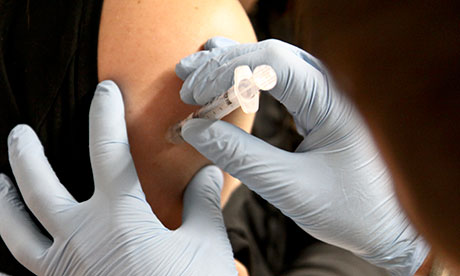Tackling homelessness is key to eradicating TB
Tuberculosis (TB) cases across the capital have fallen for the third year in a row, with 2,572 cases diagnosed in 2014 compared to 2,965 in 2013.
Figures from 2012-2014 show an average of 83 cases a year in Hackney. Meanwhile neighbouring Haringey averaged 87, just slightly more.
Commenting on the London-wide decline, Dr Yvonne Doyle, regional director for Public Health England in London, said: “This excellent news is a credit to the hard work going on throughout the city to tackle this disease.
“Key areas we’re focused on include earlier diagnosis, better treatment, and improved screening and treatment of new migrants for latent TB infection, which people can carry for a number of years before active TB develops.
“The decrease is also likely due to the impact of pre-entry screening which sees migrants on visas with a duration of six months or longer, and who are from countries with high rates of TB, screened for active TB before they enter the UK.
However TB rates in London still remain among the highest in Western Europe and the disease remains a priority for Public Health England, which says the number of cases in England is still ‘unacceptably high’.
Homerton work
Hackney’s own TB team at Homerton Hospital won the Bevan Prize for Health and Wellbeing last July in recognition for their work, which included treating people like Sarah*.
“Seven years ago Sarah* had to flee her home country after being beaten, tortured and raped by the police,” according to Homerton Hospital’s tuberculosis case worker Sue Collinson.
“Sarah discovered she had TB, but because she was in the UK illegally, with no recourse to public funds and technically homeless, she was at risk of not being able to complete her course of TB medication.”
Collinson’s colleague Professor Graham Bothamley says if those suffering from TB are homeless, it makes it much harder to treat and get rid of the disease: “TB rates in London are reported to be falling.
“However, notification of TB cases may be falling behind in some areas. Homeless people and those without an address in London but treated in a London clinic, and probably actually living in London, are no longer included in the figures.
“The other problem with rates is assessing the underlying population trend especially as 2011 was the last census, as cases are normally expressed per 100,000; actual numbers may therefore be a more accurate representation.”
What more can be done?
To continue this downward trend, Professor Bothamley said three things would help London achieve the success Hackney has already seen.
Firstly, he says, London GPs need to send sputum early in those with a cough and possible symptoms of TB, which identifies infectious cases as early as possible and prevents transmission.
Secondly, London also needs to provide help anyone with problems taking their medicine, such as those with problems such as drug or alcohol problems or mental illness.
But the most difficult recommendation? Housing all patients with TB for the duration of treatment, regardless of their right to housing.
This approach is something the Homerton TB team and Hackney Council has pioneered to ensure that patients can complete their treatment without the disruption of moving house or, worse, becoming homeless.
The security offered by this housing scheme helped Sarah and many other patients pursue treatment until they are well again.
Collinson explains: “The TB team was able to provide her with temporary accommodation through an agreement with our local council, but this would only be for as long as she was on TB treatment, normally six months.
In the end, Collinson reports, Sarah got leave to remain in the UK.
She will see her children again at Christmas for the first time in seven years, thanks to help from the Red Cross.
*Sarah is not her real name

